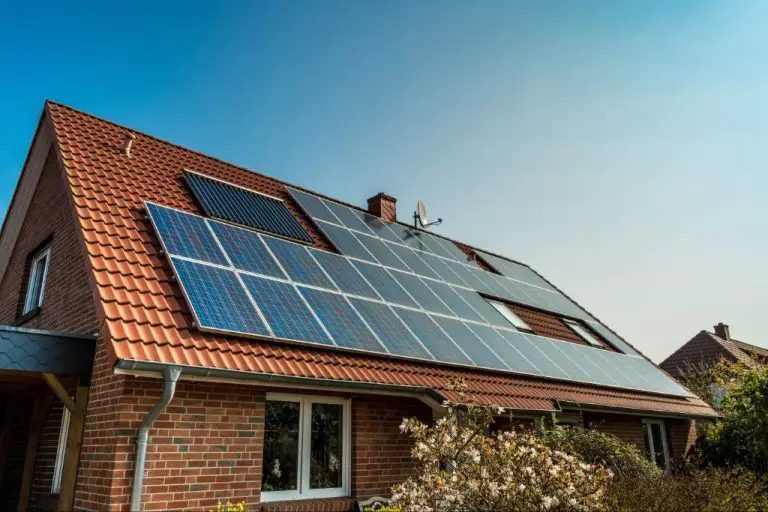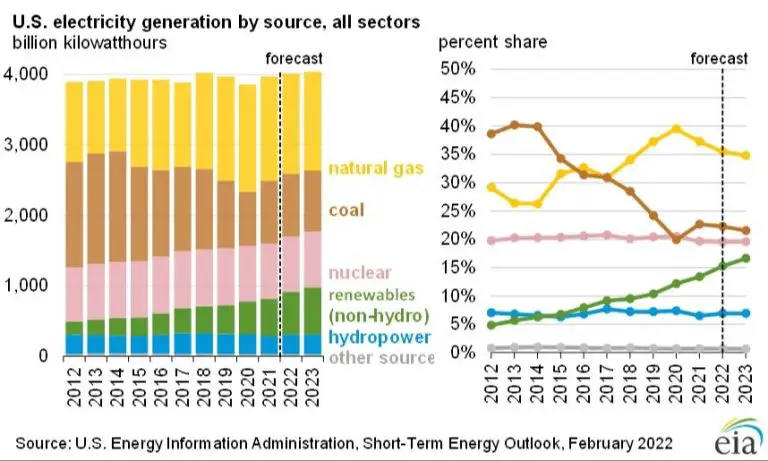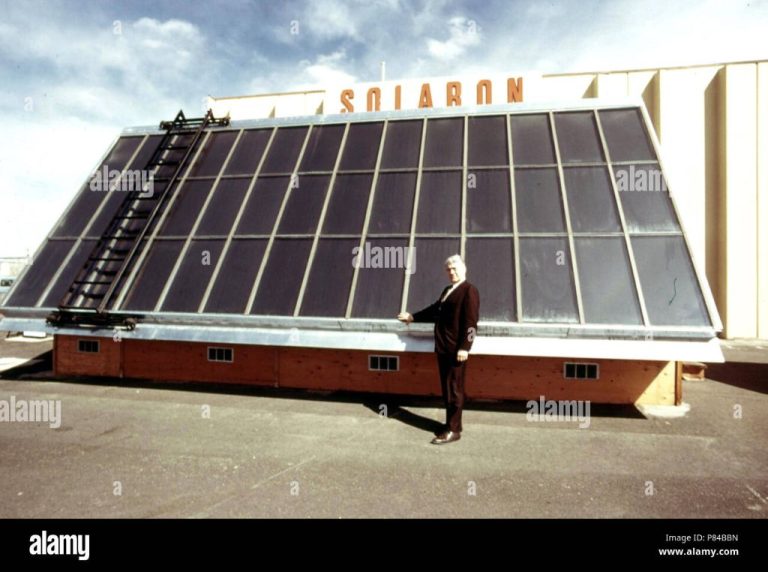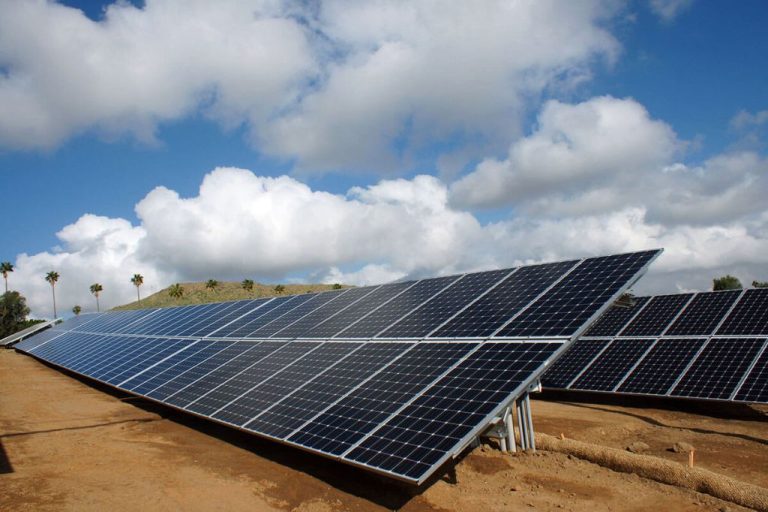What Is Solar Energy From Energy?
What is Solar Energy?
Solar energy is the conversion of energy from sunlight into electricity or heat. It is generated directly using photovoltaics (PV), concentrated solar power (CSP), or indirectly using concentrated solar thermal. The sun is an abundant renewable energy source that can be harnessed in all areas of the world.
Solar PV systems convert sunlight directly into electricity using semiconducting materials like silicon. When sunlight hits these materials, electrons are knocked loose and flow into an electrical circuit, generating electricity. This electricity can be used immediately, stored in batteries, or fed into the grid. Solar PV panels are commonly seen on rooftops, but also integrated into building materials or mounted on the ground at utility scale.
Concentrated solar power (CSP) systems use mirrors or lenses to concentrate sunlight into an intense beam heat. This thermal energy is then converted into electricity via a steam turbine or thermal engine. CSP requires direct sunlight, so it’s mainly used in dry, sunny climates. The main CSP technologies are parabolic troughs, solar towers, dish stirling, and linear Fresnel reflectors.
Solar thermal systems, like solar water heaters, use heat from the sun to warm water or spaces directly. This thermal energy can displace other fuel sources like natural gas, providing cleaner and cheaper hot water heating.
In summary, solar energy leverages radiation from the sun to produce electricity and heat through photovoltaics, concentrated solar, and solar thermal applications. It provides a clean, renewable energy source that can help reduce reliance on fossil fuels.
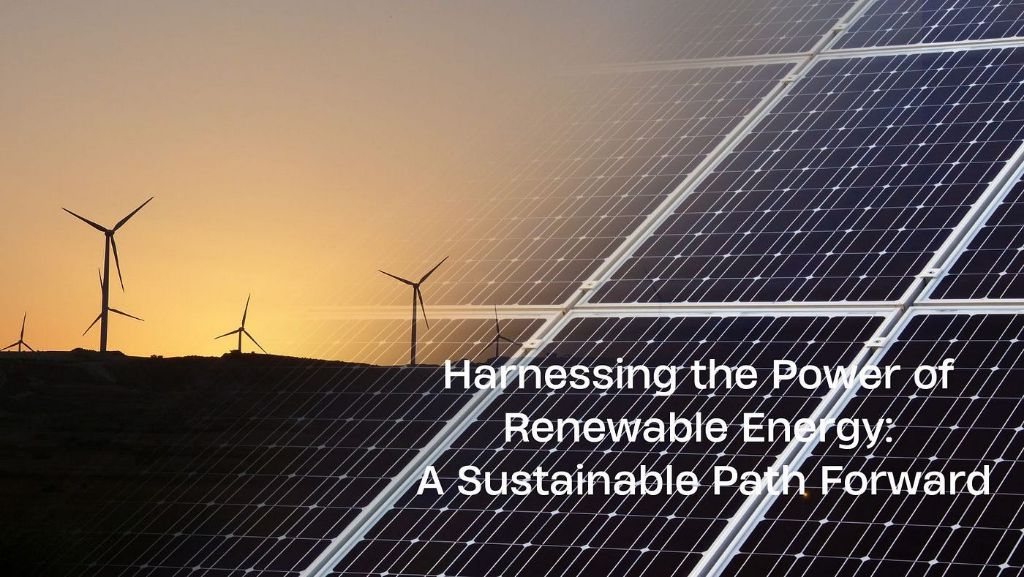
History of Solar Energy
The concept of harnessing energy from the sun dates back centuries, with early humans using passive solar techniques like orienting buildings and designing spaces to naturally collect sunlight and warmth. Some of the first active solar technologies like burning mirrors to concentrate sunlight were developed in Ancient Greece and Egypt.
The 19th century marked more modern developments in solar technology. In 1839, the French physicist Edmond Becquerel discovered the photovoltaic effect while experimenting with electrodes in a conductive solution exposed to light. In 1873, Willoughby Smith discovered the photoconductivity of selenium, which laid the groundwork for the first solar cells.
In the early 20th century, Albert Einstein helped explain the photoelectric effect, or the ability of some materials to convert light into electricity, by developing a theory for it and winning a Nobel prize. The first silicon solar cell was invented in 1941 by Russell Ohl. Following World War II and the space race, solar technology research and development accelerated, with satellites using solar panels being launched beginning in 1958.
The Arab oil embargo of the 1970s led to greater interest and investment in renewable energy like solar. Major innovations in silicon manufacturing and solar efficiency continued through the end of the century. The 2000s and 2010s have seen massive scale-up in solar installations and a dramatic drop in prices, with solar now becoming a mainstream energy source around the world.
Benefits of Solar Energy
Solar energy offers numerous benefits that make it an attractive renewable energy source. Some of the main advantages of solar power include:
Renewable and Abundant
Sunlight is freely available and unlimited. Solar energy is considered a renewable energy source because it is continuously replenished by the sun. We cannot deplete solar power like we can fossil fuels.
Reduces Reliance on Fossil Fuels
Generating electricity from solar panels reduces our dependence on coal, natural gas and other non-renewable sources of energy. Widespread adoption of solar can help phase out fossil fuels.
Lowers Electricity Bills
Solar panels allow homeowners and businesses to generate their own electricity during the daytime to power their buildings. This decreases the amount of electricity they need to buy from the grid and lowers their monthly bills.
Supports Grid Resiliency
Local solar energy production improves the resilience and reliability of the electric grid. Solar panels combined with storage can provide backup power if the grid goes down.
Types of Solar Technologies
There are several technologies available to harness the sun’s energy for practical use:
Photovoltaics
Photovoltaic (PV) solar panels or solar cells convert sunlight directly into electricity via the photovoltaic effect. This is currently the most widely used solar technology. PV panels are composed of semiconductor materials like silicon that absorb photons from sunlight and release electrons, generating a DC electric current.
Concentrated Solar Power
Concentrated solar power (CSP) systems use mirrors or lenses to concentrate sunlight onto a receiver, heating up a transfer fluid that is used to produce steam to drive a turbine generator. CSP allows for thermal energy storage, providing electricity even when the sun isn’t shining.
Passive Solar Heating and Lighting
Passive solar building design takes advantage of sunlight’s heating and lighting abilities through strategic building orientation, window placement, thermal mass, insulation, and other techniques without mechanical devices. This can significantly reduce the need for heating, cooling, and lighting from conventional energy sources.
Solar Energy Production
Solar energy production has grown substantially over the past decade, driven by falling prices and supportive government policies. In 2021, solar energy accounted for about 3% of total global electricity production, up from just 0.1% in 2009. Several factors are contributing to the continued growth of solar energy production:
Declining costs: The average cost to install solar has dropped by more than 70% over the last decade, making it competitive with fossil fuel sources in many markets. This cost reduction has been driven by economies of scale, technology improvements, and market expansion.
Government incentives: Many governments have implemented financial incentives and renewable energy targets to encourage solar adoption. These include tax credits, feed-in tariffs, renewable portfolio standards and government auctions/tenders.
Improving technologies: Advances in solar panel efficiency, energy storage solutions and mounting systems are also supporting growth. Panel efficiencies have increased from around 15% to over 22% in the last ten years.
Corporate procurement: Many companies are installing solar panels on their facilities to reduce energy costs and meet sustainability goals. Corporate solar capacity increased over 40% annually between 2014-2019.
The countries with the most total installed solar capacity are China, United States, Japan, Germany and India. The U.S. states that produce the most solar energy are California, Texas, Florida, North Carolina and Arizona. The typical solar photovoltaic system size for residential rooftops is 5-10 kW while commercial/utility scale systems are usually in the megawatt range. With supportive policies and economics, global solar production is expected to grow over 15% annually over the next decade.
Cost of Solar
The cost of solar power has declined significantly over the past decade, making it increasingly competitive with conventional power sources. The main metric used to compare the cost of different energy sources is the levelized cost of energy (LCOE), which measures lifetime costs divided by energy production. In 2010, solar PV had an LCOE of around $0.37 per kilowatt-hour (kWh), but by 2020 it had dropped to $0.037/kWh—a 90% reduction.
In terms of installed costs, the average price to install a residential solar system has fallen from over $9 per watt in 2009 to under $3 per watt in 2021. Commercial and utility-scale solar costs have followed a similar trajectory. This dramatic price drop is attributed to improvements in solar panel efficiency, manufacturing scale and supply chain development, and balance of system cost declines as the industry has matured.
Solar’s rapidly improving cost-competitiveness has been accelerated by federal tax credits, state renewable portfolio standards, net metering policies, and other incentives aimed at encouraging renewable energy adoption. With solar reaching “grid parity” in many markets, meaning it can generate power at equal or lower LCOE than conventional sources, some incentives are now being phased out.
Despite cost declines, solar still has challenges to overcome related to intermittency, storage, and transmission. But with costs projected to fall further as technology advances, solar is expected to become the lowest cost option for new electricity capacity in most of the world in the near future.
Challenges of Solar Adoption
While solar energy has enormous potential benefits, there are also some key challenges that need to be addressed for large-scale adoption of solar power.
One major challenge is the intermittent nature of solar energy. Solar panels only produce power when the sun is shining. At night and on cloudy days, solar panel output drops dramatically. This intermittency makes it difficult to integrate solar into the existing power grid infrastructure without significant upgrades in energy storage technology.
Related to the intermittency issue is the challenge of energy storage. Currently, affordable grid-scale storage solutions are limited. Better storage technology would allow solar power generated during peak sunlight hours to be used anytime. Progress is being made with battery and other storage innovations, but more work is needed.
Land use issues pose another challenge. Utility-scale solar farms require large tracts of land. Finding suitable locations with proper conditions and minimal environmental impact can be difficult. Rooftop solar on homes avoids land use issues but has limits on capacity.
The existing power grid also requires substantial upgrades to handle the influx of variable solar generation. Grid operators face technical hurdles to maintain reliability and smooth integration of solar energy into the overall supply mix. More advanced grid management techniques are being developed.
Permitting, regulations, and policies at the federal, state, and local levels can also impede solar adoption. Outdated rules and limited coordination between various authorities slows expansion in many areas. Streamlining and modernizing processes could accelerate solar growth.
Notable Solar Projects
There are many notable large-scale solar energy projects around the world that demonstrate the rapid growth and adoption of solar technology. Some of the largest solar installations showcase the scalability of solar, while innovative applications highlight the versatility of solar applications.
The Topaz Solar Farm in California is one of the world’s largest solar photovoltaic power plants, with a capacity of 550 megawatts. Covering over 9.5 square miles, the farm’s millions of ground-mounted panels generate enough electricity to power 160,000 average Californian homes. Topaz was constructed in phases between 2011 and 2015.
India’s Kamuthi Solar Power Project is considered the world’s largest single location solar photovoltaic installation, with a capacity of 648 megawatts. Located in the state of Tamil Nadu, the site includes 2.5 million individual solar modules spread over 10 square kilometers. Kamuthi generates enough electricity for about 150,000 households.
Solar has also provided affordable and sustainable energy for rural or developing regions. The 84 megawatt De Aar Solar Power Farm in South Africa came online in 2015 as one of the first large-scale solar farms on the African continent. The project provides enough energy for about 40,000 homes.
There have also been innovative applications of solar technology, such as The Solar Impulse 2 aircraft that completed an historic solar-powered flight around the world in 2016. This demonstrated the potential for solar energy to facilitate zero-fuel air transportation and electric aviation.
Future of Solar Energy
As solar technology continues to improve in efficiency and decline in cost, the future looks bright for solar to expand and meet more of the world’s energy needs. Here are some key aspects shaping solar energy’s future growth:
Forecasts for Growth: According to projections, solar power capacity could grow from around 600 gigawatts today to over 8,500 gigawatts by 2050 globally. Some forecasts estimate solar will represent 3-5% of global electricity by 2030 and up to 20% by 2050 as costs continue falling. The International Renewable Energy Agency predicts solar capacity in some major markets growing as much as 15% annually through 2025.
Emerging Technologies: Advances are being made across solar technologies. For example, perovskite solar cells are being researched to combine low costs and high efficiencies. Companies are developing floating solar farms placed on reservoirs. Solar companies are finding creative new places to install panels, like building facades. Energy storage innovations will also facilitate growth in solar adoption.
Meeting Energy Demand: Solar has massive potential to meet humanity’s energy needs in a renewable and sustainable way. The International Energy Agency estimates solar alone could provide over 8,000 exajoules per year, more than current and projected global energy demand. As solar expands, it could realistically provide a substantial share of electricity, heating, cooling, and fuels globally.
Solar Energy and Sustainability
Solar energy is one of the cleanest and most sustainable energy sources available. It produces no air or water pollution and has an extremely small carbon footprint compared to fossil fuels like coal and natural gas. Widespread adoption of solar power will be critical for reducing greenhouse gas emissions and mitigating climate change.
The carbon footprint of solar panels is estimated to be only 5-35 gCO2/kWh over their lifetime, compared to about 1,000 gCO2/kWh for coal power plants. This is because solar panels produce emissions only during manufacturing, transportation, installation and maintenance. They emit zero greenhouse gases when generating electricity. Fossil fuels emit CO2 every time they are burned for energy.
Solar energy could potentially supply most of the world’s electricity needs in a sustainable way. The amount of solar energy that hits Earth in one hour is enough to power the entire world for a year. Solar PV systems are now affordable and efficient enough for mass adoption globally. With supportive policies, solar power could grow from 2% of global electricity generation today to at least 20-30% by 2030 according to projections.
Increased use of solar energy will be vital for keeping global warming under 1.5°C as outlined by the Paris Agreement. It is among the key clean energy technologies, along with wind power, needed to transition away from fossil fuels while providing affordable and reliable electricity across the world. Widespread solar adoption will bring us closer to building sustainable, equitable and prosperous societies.


